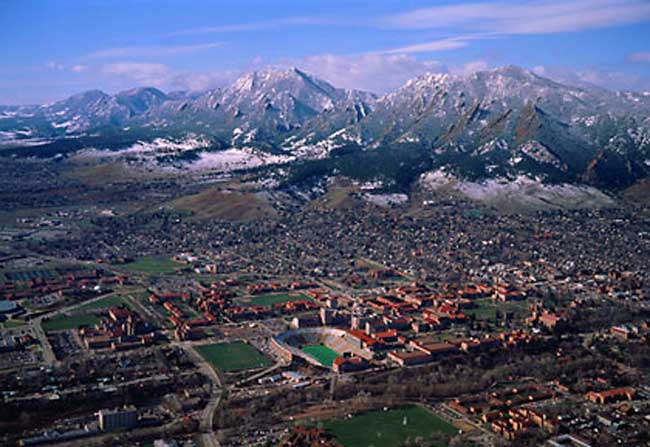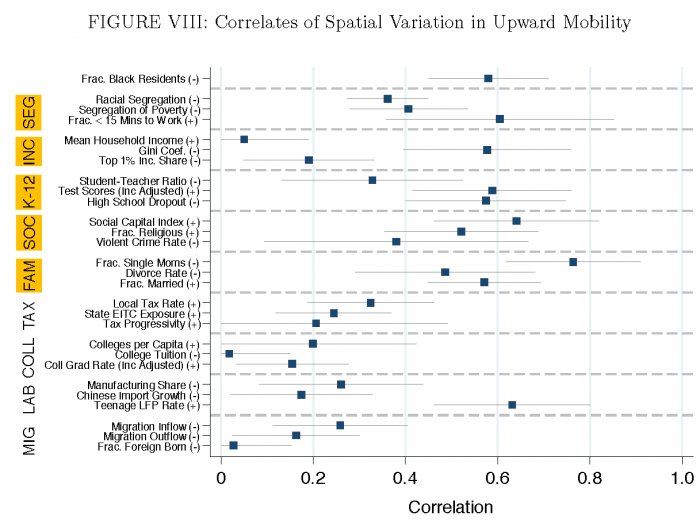On Sunday we heard that sixty of Tallahassee’s political, educational and business elites were headed to Boulder, Colorado to seek new ideas for our local economy.
Monday morning we read that these leaders were wandering Pearl Street and peering into the windows of locally owned coffee shops, breweries and stores.
And then a report by two Harvard professors, published in the New York Times, which indicates Leon County ranks low for income mobility for children in poor families, hit the mobile devices of the delegation.
Leon County Chairman, Mary Ann Lindley, responded by telling the Tallahassee Democrat “we have our work cut out for us in improving life.”
The report shows that Leon County ranks better than only 13% of the 2,478 counties included in the study when it comes to providing opportunity for poor children to move up the economic ladder.
Boulder County, home to Boulder, Colorado ranked better than 77% of all counties.
What should be shocking to the local Tallahassee elected leaders in Boulder was that the report concluded “The main lesson of our analysis is that intergenerational mobility is a local problem, one that could potentially be tackled using place-based policies.” (Page 42 of original report, emphasis added)
Why do some areas of the U.S. exhibit much higher rates of upward mobility than others?
The study concluded that there were five categories that exhibit the strongest relationship with mobility: racial demographics, segregation, income inequality, school quality, social capital, and family structure. The correlations are shown in the chart below. Click on chart to enlarge.
Within the categories the strongest single variable correlated with mobility was the percentage of children living in single-parent households. The higher the number of single parent households, the less income mobility.
In fact there was no category that had a stronger correlation to income mobility than the family structure category, which also included divorce rates (negative correlation) and two parent families (positive correlation).
The social capital category also showed strong correlation with income mobility. One measure of social capital, using voter turnout statistics and other measures of community involvement, had a positive and strong relationship with income mobility.
The study also considered two other proxies for social capital: the percentage of religious individuals (based 39 on data from the Association of Religion Data Archives) and the rate of violent crime (using data from the Uniform Crime Report).
The findings indicate that religiosity is strongly positively correlated with upward mobility, while crime rates are negatively correlated with mobility.
The New York Times article is here. The complete study is available here.



Next thing you know the delegation will be asking for a new tax to make our red hills into mountains so we can be more like Colorado.
Boulder has manufacturing. When Tallahassee/Leon decides that manufacturing is an OK way to solve the unemployment issue then we may be able to move ahead. Until then we will be stuck!
The usual suspects on a junket…who’d have thunk it?
Next stop Sandestin…or is it Amelia Island?
Almost anybody can get to Sandestin or Amelia Island with their own resources. Free use of public money for the ostensible purpose of learning of fundamentally dissimilar communities is more likely to send our “leaders” to Banff, Tahiti, and/or Edinburgh. Bon Voyage!
In fairness to everyone that went to Colorado, we should keep in mind that they are trying to justify the use of $92-million in perfectly good resources (i.e., the infrastructure sales tax) for perfectly ineffective public policy (“economic development”).
First we had Gillum’s “All-America City” lie. Then we had the sales tax lie advocated by the Chamber and local politicians stating that a regressive tax, which hurts the poor, would benefit the entire community.
Even Scott Maddox in a rare moment of candor admitted that the poor in Tallahassee are getting “screwed.”
We should get rid of the worthless local politicians, and just give the Chamber and FSU whatever they want.
God help the poor. The rich get tens of millions of dollars from the CRA, and the poor get a shelter.
Let me see, we have sent the same group to Austin, Madison, Raleigh and Chattanooga and I am sure there have been other cities and nothing changes here.
WOW – I think the big issue is 60 (SIXTY) people attended from Leon County. But they have to stick the poor who live in multi-unit housing with a doubling of thier fire service fee. They should be ashamed!
The other issue is, that we, the readers of Tallahassee Reports know and understand this. The problem is the people that need to read and understand will not take their heads out of the Red Clay hills.
The Tallahassee Democrat in its first article about the trip to Boulder compared the two cities. What jumped out was the difference in “median income”. I believe it was about $20K more or close to 50% higher in the place our delegation is visiting. So, while the Chamber and Economic Development and their politically well connected and favored “developers” may pick up a few good ideas on how to invest (spend) some of our tax $$$… Boulder and Tallahassee are not exactly an apples to apples comparison. IMO, we have a number of local resources available to mentor, encourage and fund promising “venture capital” (incubator ideas but several of theses simply don’t communicate with each other. And Tally has never really sought to solicit a “privately” controlled group of potential Angel investors that could provide funding to the most promising ventures.
Instead of throwing money at the problem of improving the “upward Mobility of poor children” why not just bus them to Boulder where their upward mobility would be improved and Leon county’s ranking would be improved. Ha! Now that’s a win-win!
Since pot is legal in Colorado is anyone going to be waiting at their TLH gate, when the commissioners return, with specimen cups?
I rather have them take an I.Q. Test instead of a Drug Test. I think the results will be much more informative.
I would like to know who was on the invitation list, who was present, how the invitation list was chosen, and whether this was one of our local government’s sanctioned events, or did leadership and staff work unilaterally? Will Tallahassee Reports be following up on the travel itineraries and expenditures of government leaders and their support staff?
As I read one of the Democrat’s articles which compared Boulder and Tallahassee, it was very noticeable how many demographic, climate, family makeup, school information and other comparisons were left out.
Can you provide a side by side comparison of the two cities from the Harvard report’s statistical info (e.g. Percentage of single parent households, school graduation rates, etc)?
Boulder is an overwhelmingly white city with a black population of only 1.1 percent. By comparison, the black population of Tallahassee is 35 percent.
The poverty rate in Boulder is only 14.2 percent. By comparison, the poverty rate in Tallahassee is more than twice that at 30.2 percent.
The Democrat erroneously published a poverty rate in Boulder of 22.8 percent.
Hmmmmmm. Interesting repor. One the doesn’t seem to coincide with the popular narrative.
I think you should actually read the report at the link above. Income inequality, segregation and the poor schools associated with both have been analyzed numerous times recently. it’s also obvious that one-person families are going to have only one income and little time for nurturing.
The article in Tallahassee Reports seemed to overemphasize the influence of religiosity and crime in its conclusion. These are but two aspects of one factor: social capital, which was only one of several factors that were correctly noted at the beginning of the article.
That being said, I think city and county staff could afford to pay their own bills for this trip.
Am I missing something? When I look at the chart and read the report it says that some of the factors are more correlated than others. The report says that family structure and religiosity are two of the stronger correlations to income mobility. While others, though included, have less. People don’t like to admit the importance of family structure and religion, but it’s not going away until they do and deal with it as best as possible.
Who is paying for this trip?
City and County staff and elected officials? We are.